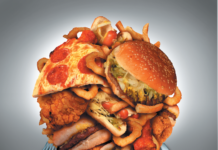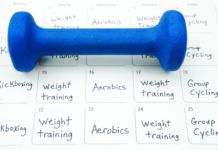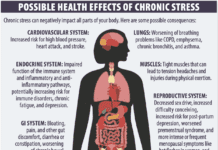Knowing how to make healthy dietary choices and actually doing it can be two different things. Creating new habits and patterns around shopping, cooking, and eating can help. We asked the nutrition experts on our Editorial Advisory Board how they help ensure healthy dietary choices for themselves and their families. Perhaps some of these tips will work for you as well!
Diane L. McKay, PhD, is director of the Friedman School of Nutrition Science and Policy’s Online Graduate Certificate Programs and an assistant professor at both the Friedman School of Nutrition Science and Policy and the Tufts School of Medicine.
To encourage fruit and veggie intake (and discourage reaching for processed snack foods), I keep fruit bowls on the kitchen counter in plain view. I also put grab-and-go snacks like hummus and baby carrots front-and-center in my fridge. Lastly, we keep an assortment of mixed nuts and dried fruits in the candy bowl (there’s dark chocolate there, too, but it is buried under the nuts and fruit).
Jeffrey B. Blumberg, PhD, is a research professor in the Food Is Medicine Institute at the Friedman School. His research has been focused on the role of antioxidant nutrients in healthy aging and the application of novel nutrient profiling models.
Finding the time for a healthy breakfast can be tough. I think overnight oats are a great solution! They only take a few minutes to make at night after dinner. Simply mix oats with milk or non-dairy plant-based substitute and refrigerate. In the morning, add fresh fruit and/or some seeds (chia, flax, hemp, poppy, pumpkin, sesame, or sunflower) and you’re ready to eat a satisfying, fiber-rich, whole grain breakfast.
Richard D. Siegel, MD, is the co-director of the Diabetes and Lipid Center and a doctor at the Weight and Wellness Center at Tufts Medical Center.
I increase my odds of making healthy choices when food shopping by being prepared. I recommend developing a list of all your favorite plant-based, unprocessed or minimally processed, high fiber foods and lean protein options. That way you can easily put together a weekly shopping list of things to have on hand for quick, healthy meals. It also helps to keep a running list of things you use up and need to replace or new items you would have used if they were available.
Joel B. Mason, MD, is senior scientist and leader of the Vitamins and Carcinogenesis Team at the Human Nutrition Research Center on Aging (HNRCA), a staff physician at the divisions of Gastroenterology and Clinical Nutrition at Tufts Medical Center, and a professor at Tufts University School of Medicine.
When I purchase bread in the store, I always check the ingredient list and make sure the flour is 100% ‘whole grain’ or ‘whole wheat.’ When purchasing other grain products, like crackers, I try to choose options where the first flour listed is whole grain or whole wheat.
Alice H. Lichtenstein, DSc, is the Stanley N. Gershoff Professor of Nutrition Science and Policy at the Friedman School, senior scientist and director of the Cardiovascular Nutrition Team at the HNRCA, and editor-in-chief of this newsletter.
I generally have an idea of what I am going to prepare for the week and shop with that in mind (usually on weekends). That way, when I start food prep, I have all the ingredients I need. In addition, I always have a variety of frozen vegetables that can be directly incorporated into stews, sautés, and casseroles, and frozen berries for a variety of uses. I like to make large batches and freeze in meal-sized portions. I even make big batches of whole grains, like brown rice, barley, and wheat berries, which take a long time to cook, and freeze them in portions. They thaw quickly for easy, healthy sides!
Sheldon Rowan, PhD, is a scientist in the Nutrition and Vision Research Team at the HNRCA, an assistant professor of ophthalmology at the School of Graduate Biomedical Sciences, and an assistant professor of nutrition at the Friedman School.
We buy large pieces of fish from buying clubs, cut them into meal-sized portions, and freeze them. We then cook directly from frozen on our grill—it works great. For quick, easy lunches (and dinners), you can also pan sear or bake a big piece of salmon at the start of the week. That way it’s available to put on top of salads or incorporate into salmon-salad sandwiches, patties,
or pasta dishes.
























